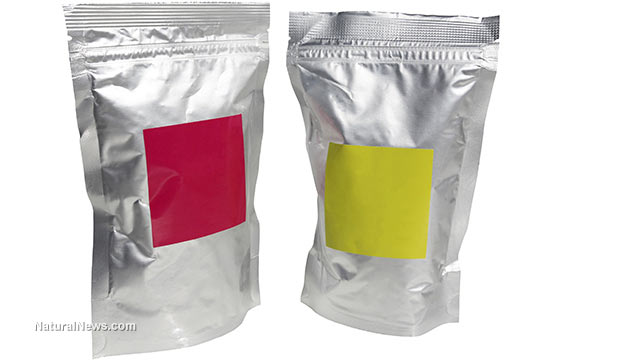
Advertisement
Besides water, the one commodity you’re going to need before the stuff hits the proverbial fan at some point in the future, is food – lots of good, clean, healthy food. Surviving a long-term societal collapse will be difficult enough as it is, just because hygiene will suffer, disease will become rampant, and the modern technologies of healthy living will disappear. So you’ll need to make sure before that day comes that you’ve taken the time to prepare a variety of wholesome food.
Obviously, you’re going to have to prepare foods for long-term storage. Now, you can buy it prepackaged – and there are some tremendous, organic choices on the market – but you can also DIY food prep safely and effectively.
As noted by Ask A Prepper, the shelf life for food varies. The food itself is a factor, and so is the method of storage. Most prepackaged food comes with a boatload of preservatives, and these can sap nutrients and add unwanted empty calories. Fresh food or food that is certified organic is obviously a better choice. But then, that makes the storage method vitally important. (RELATED: Read about Two South Carolina Lawmakers Pushing Americans To Form Like-Minded Communities In Preparation For Coming Societal Collapse.)
Some foods are packaged to last for a number of years. Rice, for instance, is generally good for anywhere from 15-30 years, though some estimate rice is only good for half that time, 10-15 years. (Many other foods have long shelf lives, including these.) While rice is still good to eat three decades later, it will have lost all of its nutritional value long before then.

Dry goods can be preserved long past their posted expiration dates, but they have to be packaged correctly. They must be packaged dry, and there can be no oxygen in the final sealed container. You can accomplish this by removing foods from their original packaging, then using a vacuum pump, oxygen absorbers, or mylar bags when repackaging them.
Another way to preserve food is through dehydration. A good dehydrator can be used to dry meats, vegetables and fruits over the course of 3-5 hours, depending on the size of the cut. Imagine drying one item an evening as you relax after a busy day for, say, six months. The amount of food you’ll wind up with will amaze you. And the best part is, the food will keep for years.
Sealing food for long-term storage is the most important part of the preparatory process, obviously. If you don’t seal your food properly, it will spoil and you won’t have it when you need it. That said, even when you get good seals on your food, check it every month or so to make sure the seals haven’t broken.
When foods are vacuum-sealed, they will keep well until you have enough to fill a Mylar bag. If you’re using a 3- or 6-gallon-sized Mylar bag, first place it in a plastic bucket (5 gallon) or other appropriate container before you begin filling it. The Mylar bag will need the support of the sides of the bucket.
Many preppers swear by oxygen absorbers for long-term food storage. They can be used with Mylar bags, glass jars that have a sealing-gasket lid, and PETE plastic bottles that also have gasket-type lids. In order for the oxygen absorbers to operate properly, whatever type of container you’re using must seal completely. That’s important. (RELATED: Read The Five Best Bugout Foods And What Makes Them Superior.)
“Oxygen absorbers are better at removing oxygen than most vacuum devices,” Ask A Prepper noted, “but may not provide the visual proof that most people expect. This is because air is only 20 percent oxygen, so the nitrogen and other components remain after the oxygen is absorbed.”
The site also noted that oftentimes you will see a Mylar bag contract around the food after only a few hours, but you should not be concerned if it doesn’t happen and you’re using oxygen absorbers. As long as the container is properly sealed, the oxygen absorber will work its magic.
When preparing to use one, wait to open its package until the food you’re preparing is packed and you’re ready to get it sealed. After you open your oxygen absorber package, remove the number of them you plan to use within 30 minutes, then seal up the remaining absorbers in a glass jar or a bag that has been vacuum-sealed. Make sure you don’t open the individually foil-packed absorber.
Remember, you should seal your food for the long term as though you’re actually going to need it. Don’t just go through the motions. If or when the time comes that you need it, you won’t have an opportunity to run to the store to buy more food – what you have is what you have. Prepare now. For more ideas, visit Bugout.news.
J.D. Heyes is a senior writer for NaturalNews.com and NewsTarget.com, as well as editor of The National Sentinel.
Sources:
Submit a correction >>
This article may contain statements that reflect the opinion of the author
Advertisement
Advertisements















